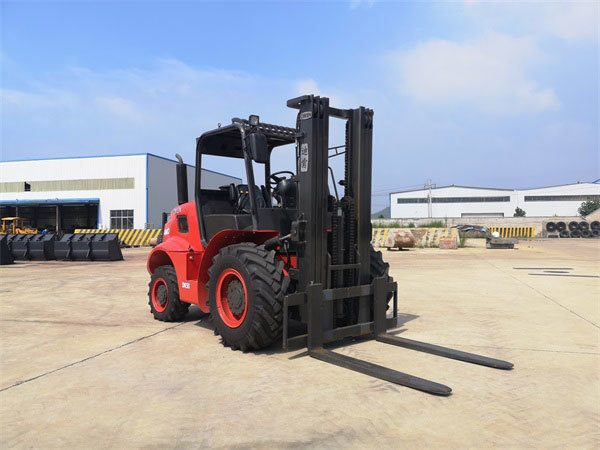Diken news
How to Properly Inspect Your 2.5 Ton Off Road Forklift Before Use: A Comprehensive Guide
Release time: 2025-06-16
How to Properly Inspect Your 2.5 Ton Off Road Forklift Before Use
Operating a 2.5 ton off-road forklift requires diligence and attention to detail. **Properly inspecting your forklift** before use not only enhances its performance but also ensures the safety of the operator and the surrounding environment. This guide will walk you through the essential steps for a thorough inspection, enabling you to identify potential issues early on. Let's dive into the specifics of how to conduct an effective forklift inspection.
Table of Contents
- Why Inspection is Essential for Forklift Safety
- Understanding the 2.5 Ton Off Road Forklift
- Key Components to Inspect on Your Forklift
- Performing the Inspection: A Step-by-Step Guide
- Common Issues to Look For During Inspection
- Importance of Maintaining Your Forklift
- Frequently Asked Questions
- Conclusion
Why Inspection is Essential for Forklift Safety
Regular inspections are vital for several reasons. They ensure that your forklift operates safely and efficiently, reducing the risk of accidents that can lead to injury or damage. Forklift inspections not only comply with safety regulations but also prolong the lifespan of the equipment. An unchecked forklift may lead to unexpected breakdowns, downtime, and costly repairs, making daily inspections a critical practice in operational management.
Understanding the 2.5 Ton Off Road Forklift
The **2.5 ton off-road forklift** is designed for heavy-duty tasks in rugged environments. These machines are equipped with specialized tires and reinforced frames to handle rough terrain, making them ideal for construction sites and agricultural operations. Understanding how this equipment works and its specific requirements is essential for conducting effective pre-use inspections.
Key Components to Inspect on Your Forklift
Visual Inspection
Start with a **visual inspection** of the forklift. Look for signs of wear and tear, such as cracks in the frame, loose bolts, or any visible hydraulic leaks. Pay attention to the tires; they should be properly inflated and free from significant damage. Visual checks are critical as they can reveal immediately obvious issues that might otherwise go unnoticed.
Mechanical Inspection
Next, conduct a **mechanical inspection** of the forklift. This includes checking fluid levels such as oil, coolant, and hydraulic fluid. Ensure that there are no leaks and that the fluids are at appropriate levels. Test the brakes, steering, and lifting mechanisms to confirm they function smoothly and reliably. This inspection is crucial because it evaluates the operational capacity of the forklift.
Electrical Systems Inspection
The **electrical systems** of your forklift should also be examined. Check the battery for secure connections and ensure that it is charged. Inspect the lights and horn to verify they function correctly. Faulty electrical systems can lead to operational failures, making this inspection an important step in the process.
Performing the Inspection: A Step-by-Step Guide
Now that we understand the key components to inspect, let’s break down the inspection process into actionable steps:
- Prepare the Forklift: Ensure the area is safe, and the forklift is on level ground. Engage the parking brake and switch off the engine.
- Conduct Visual Checks: Walk around the forklift, checking for any visible issues.
- Check Fluid Levels: Open the hood and inspect oil, coolant, and hydraulic fluid levels.
- Test Mechanical Functions: Press the brake, lift the forks, and check steering responsiveness.
- Examine Electrical Components: Check battery connections, inspect lights, and test the horn.
- Document Findings: Keep a log of your inspection results, noting any issues that need addressing.
Common Issues to Look For During Inspection
As you perform your inspection, be on the lookout for common issues that could affect the forklift's performance. These may include:
- **Fluid leaks** from hydraulic lines or engine components
- **Worn tires** that could affect traction and stability
- **Corroded battery terminals**, which can cause electrical failures
- **Loose or missing bolts**, particularly on critical components
- **Inoperable lights or horns**, which are essential for safety
Importance of Maintaining Your Forklift
Maintenance goes hand in hand with inspection. Regular maintenance extends the life of your forklift, enhances its reliability, and minimizes the risk of unexpected failures. Establishing a maintenance schedule that includes both daily inspections and periodic servicing can significantly improve operational efficiency. Consider collaborating with a professional service provider for comprehensive maintenance solutions tailored to your specific forklift model.
Frequently Asked Questions
1. How often should I inspect my 2.5 ton off-road forklift?
It is recommended to conduct daily inspections before each use. Regular checks ensure that any potential issues are identified early, maintaining safety and performance.
2. What are the legal requirements for forklift inspections?
Legal requirements may vary by region, but most regulations mandate regular inspections to ensure compliance with safety standards. It's crucial to be aware of local laws regarding forklift operation.
3. Can I perform the inspection myself, or should I hire a professional?
While you can perform basic inspections yourself, hiring a qualified technician for more in-depth evaluations and maintenance is advisable for optimal safety and performance.
4. What tools do I need for a forklift inspection?
Basic tools include a flashlight, tire pressure gauge, wrenches for checking bolts, and a checklist for documenting your findings during the inspection.
5. What should I do if I find a problem during the inspection?
If you discover any issues, do not operate the forklift until it has been repaired. Document the problems and consult with a qualified maintenance technician to address the concerns.
Conclusion
Inspecting your 2.5 ton off-road forklift before use is a fundamental practice that enhances safety, efficiency, and longevity of the equipment. By adhering to a structured inspection routine, you can significantly reduce the risks associated with forklift operation, ensuring a safer working environment. Regular checks not only help you identify potential issues but also contribute to your forklift’s overall performance and reliability. Make inspections a priority, and your forklift will serve you well for years to come.
Keywords: 2.5 ton off road forklift










